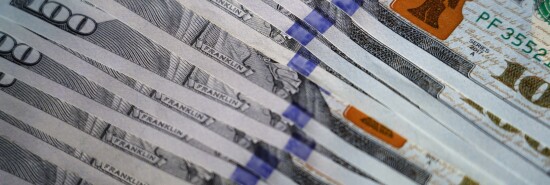
After mixed inflationary signals, Federal Reserve should hit ‘pause’ button
Quin Hillyer
Video Embed
While the inflation report released today is not encouraging, it’s also not a disaster. There is good reason for the Federal Reserve Board to pause its series of interest-rate hikes and instead wait and watch while keeping rates steady.
I write this as a decades-long anti-inflation hawk. Rather than inflation-fighting being a co-equal goal for the Fed along with full employment, I wish it were the primary goal.
INFLATION DECLINED TO 4.9% IN APRIL IN ENCOURAGING SIGN FOR ECONOMY
Even from that vantage point, though, the economy needs a Fed pause to refresh.
Today’s report said prices rose 0.4% in April. Over the past 12 months, prices have risen 7.1%, while if April’s rate continues, the one-year increase would be 4.9%. While that is still about three times what it should be, it also isn’t awful by historical standards. From 1969 through 1990, in fact, it would have been considered an encouragingly low rate, and certainly manageable.
Meanwhile, the biggest driver of inflation is now housing prices, but that’s a lagging indicator. Rent prices that were locked in during last summer’s hot housing market are expected to decline soon, investment specialist David Bahnsen told Fox Business, because “real estate prices across the board have declined considerably in recent months, and it’s going to take a few more months for the CPI to reflect this decline.”
Similarly, the current official inflation rate is affected by rising costs at restaurants, but those likely will level off as well because food prices at grocery stores actually have fallen for two months in a row.
In short, it’s not clear which way prices are trending. And with the Federal Funds interest rate of 5.25%, the highest it has been in 17 years, it would behoove the Federal Reserve Board to stop and see what their rate hikes have wrought before the board goes higher, into territory not seen since before the 9/11 terrorist attacks.
After 20 years, investment markets and proverbial Main Street businesses alike get accustomed to a comfort zone. Without overwhelming evidence of economic necessity, the Fed departs upward from that zone only at peril to the whole economy.
This is especially so right now. The past two months have seen the second, third, and fourth largest bank failures in U.S. history. All three owe at least a large part of their collapses to a deficiency in adjusting their portfolios to account for rising interest rates. The question is, how many more banks are stressed like those three?
The financial markets already are jittery. If the Fed raises rates even higher and just one or two large-ish banks collapse as a result, a panic could ensue, in the realm of (even if not to the degree of) the panic during the subprime mortgage crisis of 2008. The Fed would be well advised to risk a slightly slower return to its lower inflation target rather than to risk a major panic that could occur if it errs by raising rates too much.
CLICK HERE TO READ MORE FROM THE WASHINGTON EXAMINER
The Federal Reserve Board has a history of overshooting its target. In the first decade of this century, it kept interest rates too low for too long, then hiked them too high in 2006 (to the exact 5.25% where they now stand again). In the past decade, the Fed again pushed rates way too low for way too long, helping unleash the inflation it now has spent 18 months trying desperately to contain.
The markets need to regain equilibrium. To that end, just for once, the central bankers should keep things steady. For once, they should not just do something, but stand there – placid, confident, and well-composed.
